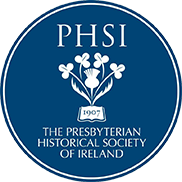Introduction
The foundation stone of what became known as Royal Belfast Academical Institution was laid on 3 July 1810 by the 2nd Marquis of Donegall, the culmination of three years work by a body of enlightened Belfast citizens, mainly businessmen, who desired to provide a first-class educational establishment for a rapidly expanding industrial and mercantile city. Other than Belfast Academy which was simply a grammar school, Ulster was bereft of any means of higher education.
There was therefore a great need for an institution that would provide both a general education and deliver academic qualifications equal to those that one would acquire from a university. Up until the early 19th century candidates for the Presbyterian ministry had to travel to Scottish universities, particularly Glasgow, so it was recognised early on that the new institution could provide a home education for the Irish Presbyterian ministry.
As early as 1808 the General Synod of Ulster was informed of the details of the intended new foundation and their support sought - the Synod was asked to accept certificates awarded to students at the collegiate department as the equivalent of a university degree. Candidates for the Presbyterian ministry were required to obtain a General Certificate and then spend two years in theological study.
The new body would appoint professors in charge of a range of subjects of study while a professor of divinity would be responsible for theological studies. The Schools Department was opened in 1814 and the Collegiate Department a year later. It was the intention that the new establishment would make it possible for a boy to start in the Schools and progress to the Collegiate Department but it is not clear to what extent this actually happened. Students in the Collegiate Department who were not adequately prepared in a particular subject could take a course in the appropriate School.
Though intending Presbyterian ministers formed the large majority of arts students attending the Institution there was no exclusivity in the management of the College. Students were admitted without reference to religion and Professors were pledged not to interfere with the faith of their students.
In addition to the Masters and Professors appointed by the Joint Boards of the Institution, the Presbyterian Synods – the General Synod of Ulster and the Secession Synod - were able to appoint Theological Professors to lecture to candidates for the ministry which they did. Relations between the Institution and the General Synod of Ulster in particular that had started so amicably soon grew increasingly strained.
This was due to the fact that in 1821 there began a controversy in the Synod of Ulster between Calvinistic and Trinitarian Presbyterians and Presbyterians who tended towards Arian views. This was to last for almost a decade and was also played out in the Institution when the Synods opposed the appointment of Professors who leaned towards Arianism. The upshot of this was that in 1841 the General Assembly (which by then was a union of the General Synod of Ulster and the Seceders) declared that the Institution was no longer satisfactory and in 1844 it applied to government for aid to erect its own college. College education continued until 1849 when the new Queen’s College opened.
The Presbyterian Historical Society is most grateful to the Board of Governors of Royal Belfast Academical Institution for permission to publish on its website the following lists of students at the school and college.
The list of Students and Scholars, 1814-1912, is taken from the original roll books or albums but in alphabetical order by surname. The dates are assumed to be the date of entrance to the school. It was published as an Appendix in the Centenary volume of the Royal Belfast Academical Institution by Joseph R. Fisher and John H Robb. Unfortunately the list is incomplete, especially in the early period. Occasionally a name is repeated but the second entry is not included.
The list of Students who received the General Certificate in the Faculty of Arts from the collegiate part of the Institution, 1817-38, is taken from the same source. The Arian controversy so consumed the Faculty of Arts that no examinations were held for the General Certificate after 1839.
List 1 - Students and Scholars, 1814-1912
List 2 - General Certificate in the Faculty of Arts, 1817-38
You must login in as a Society member to view this content. Join today!
